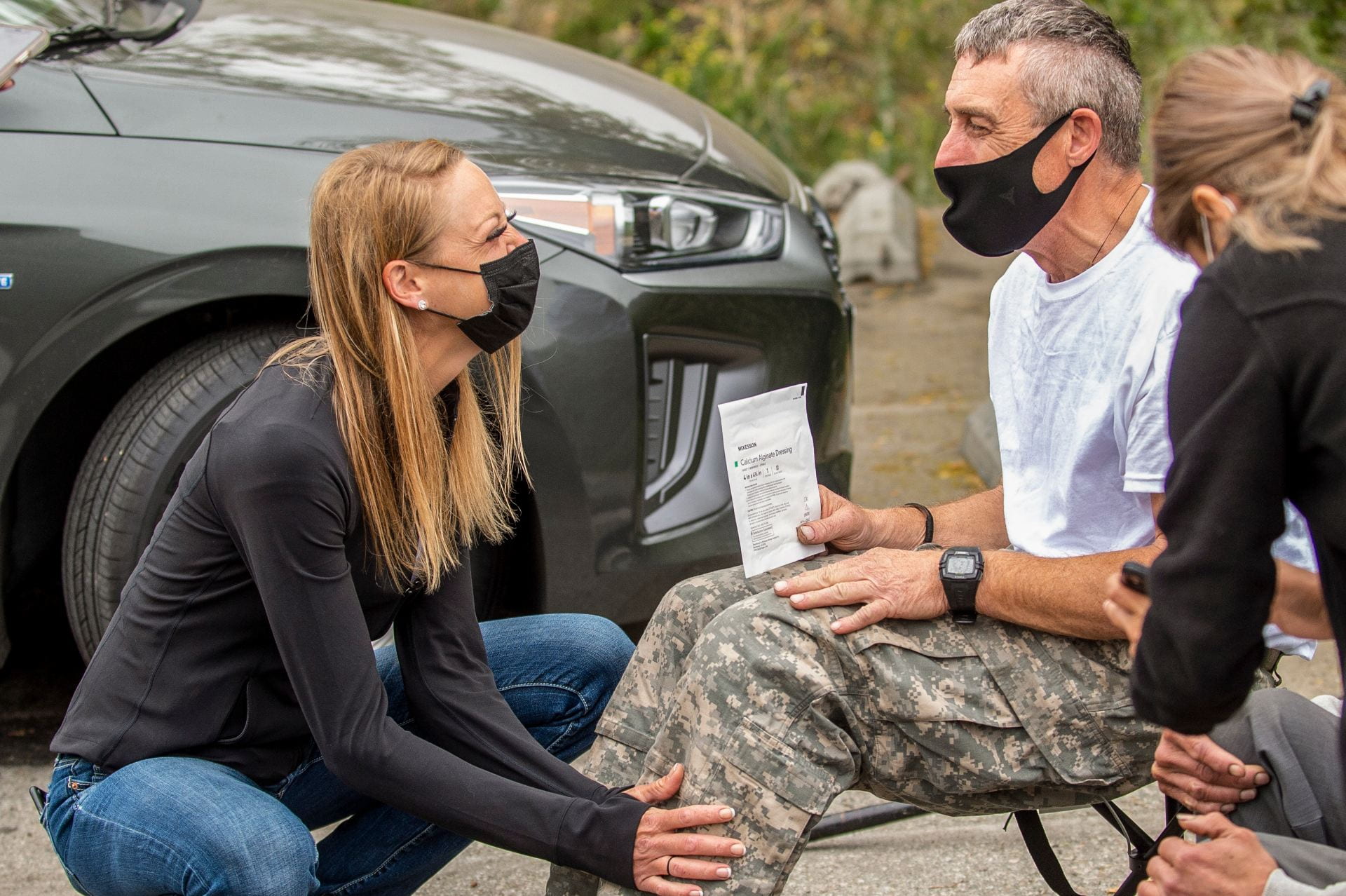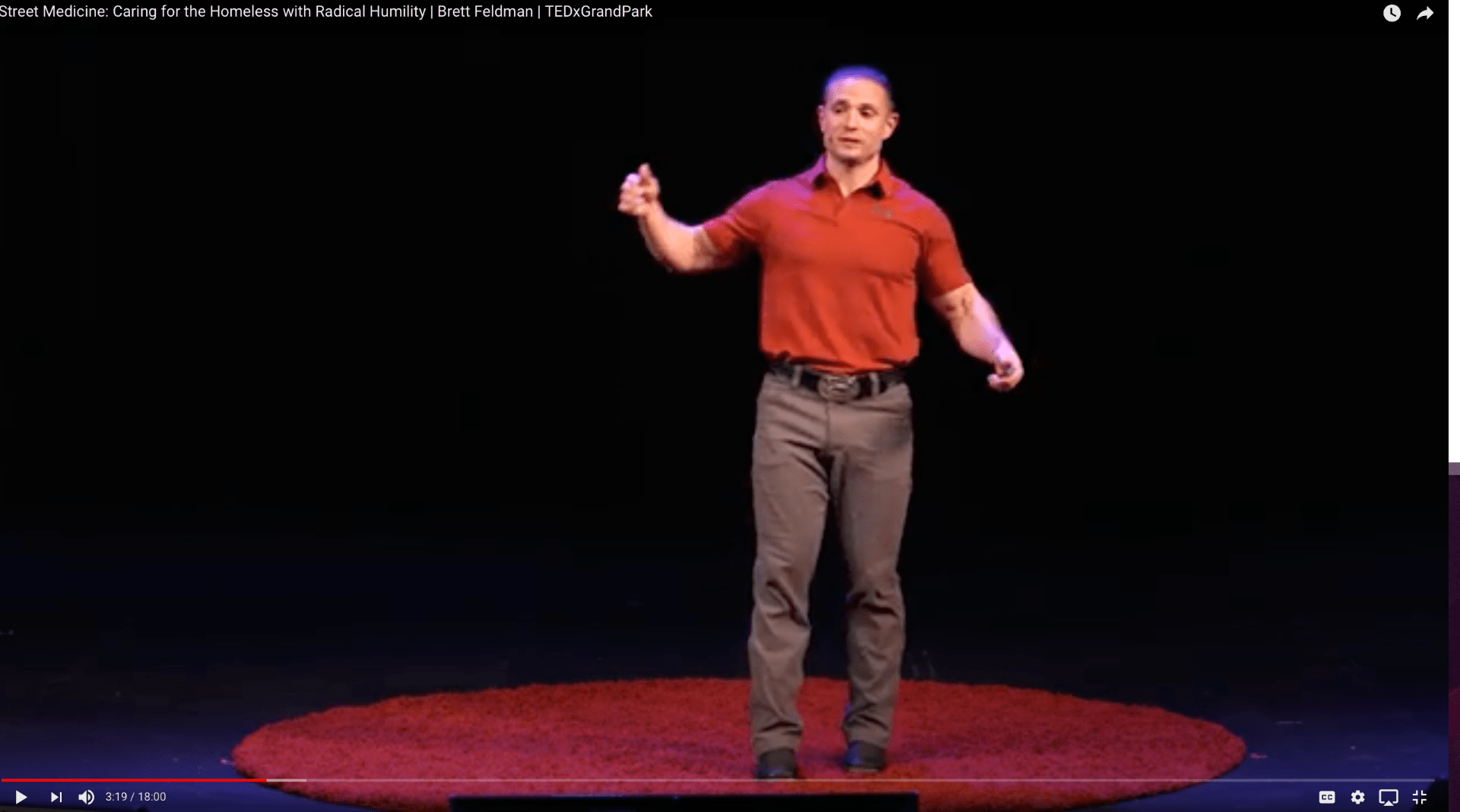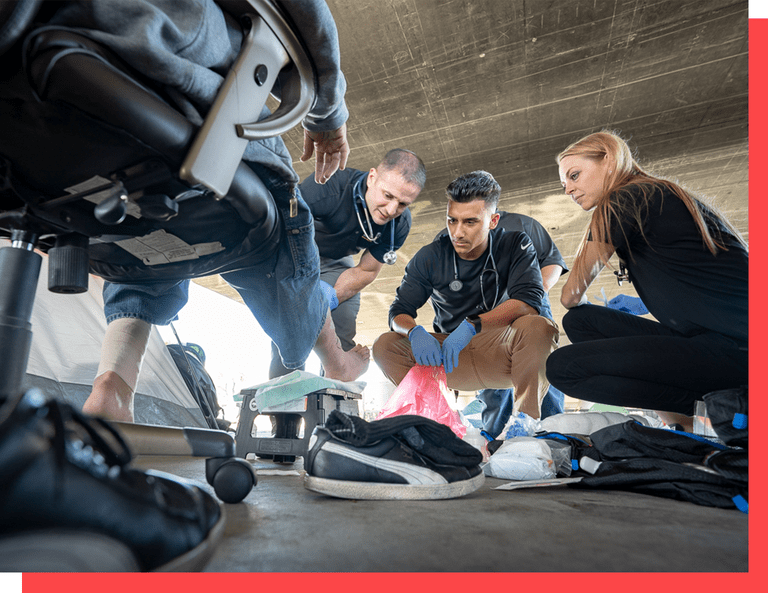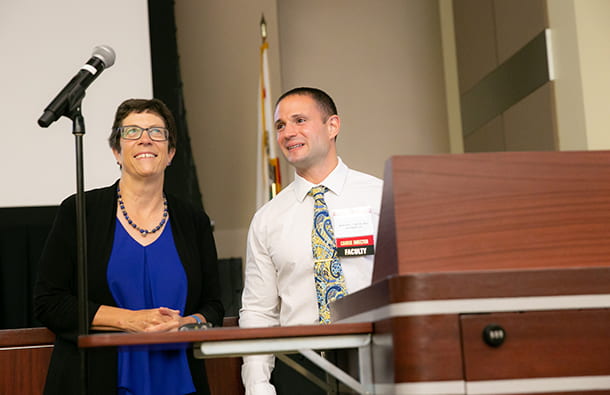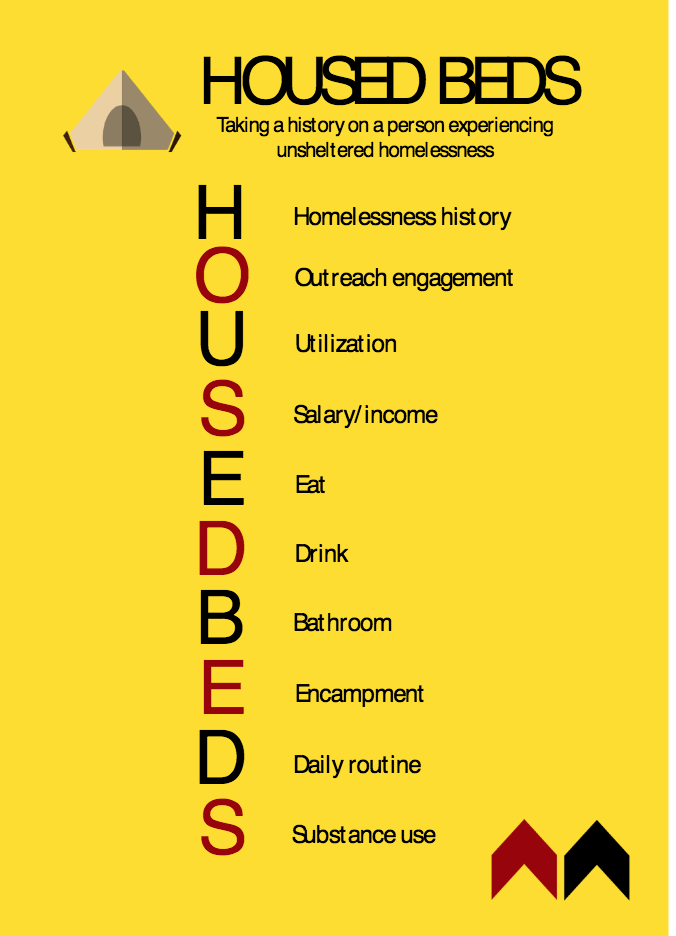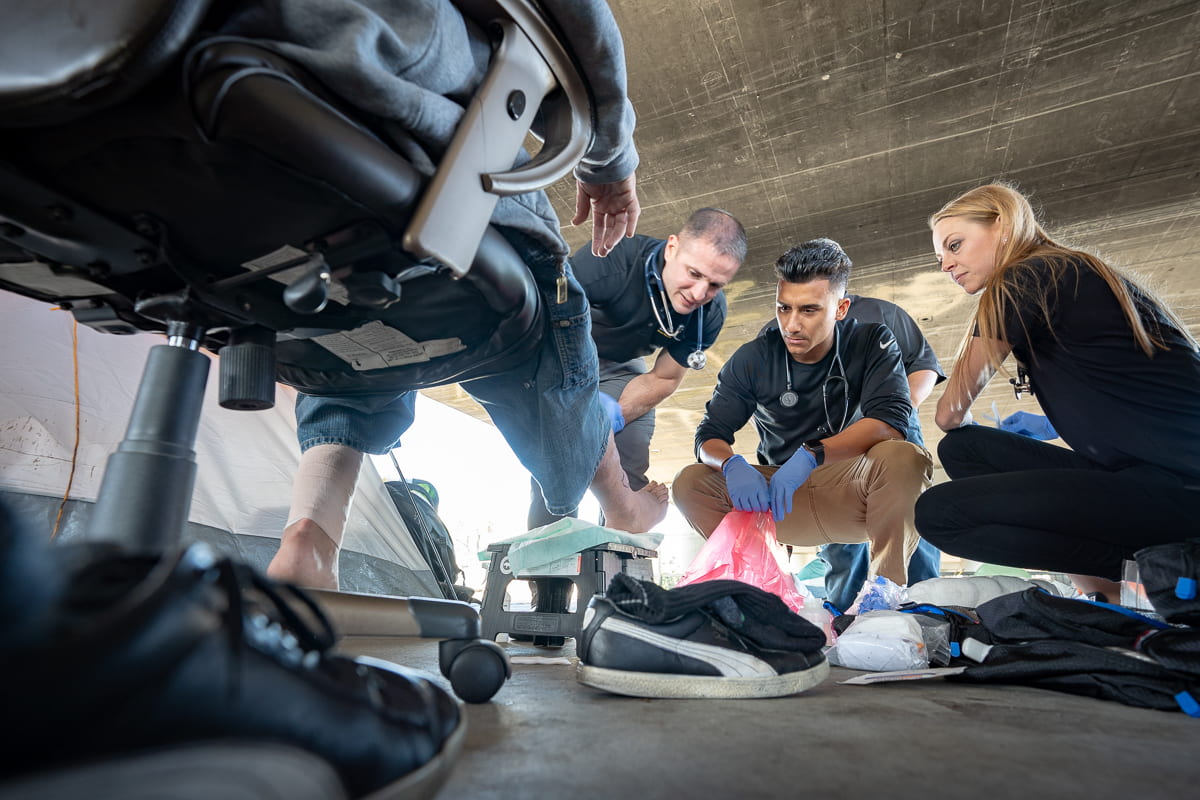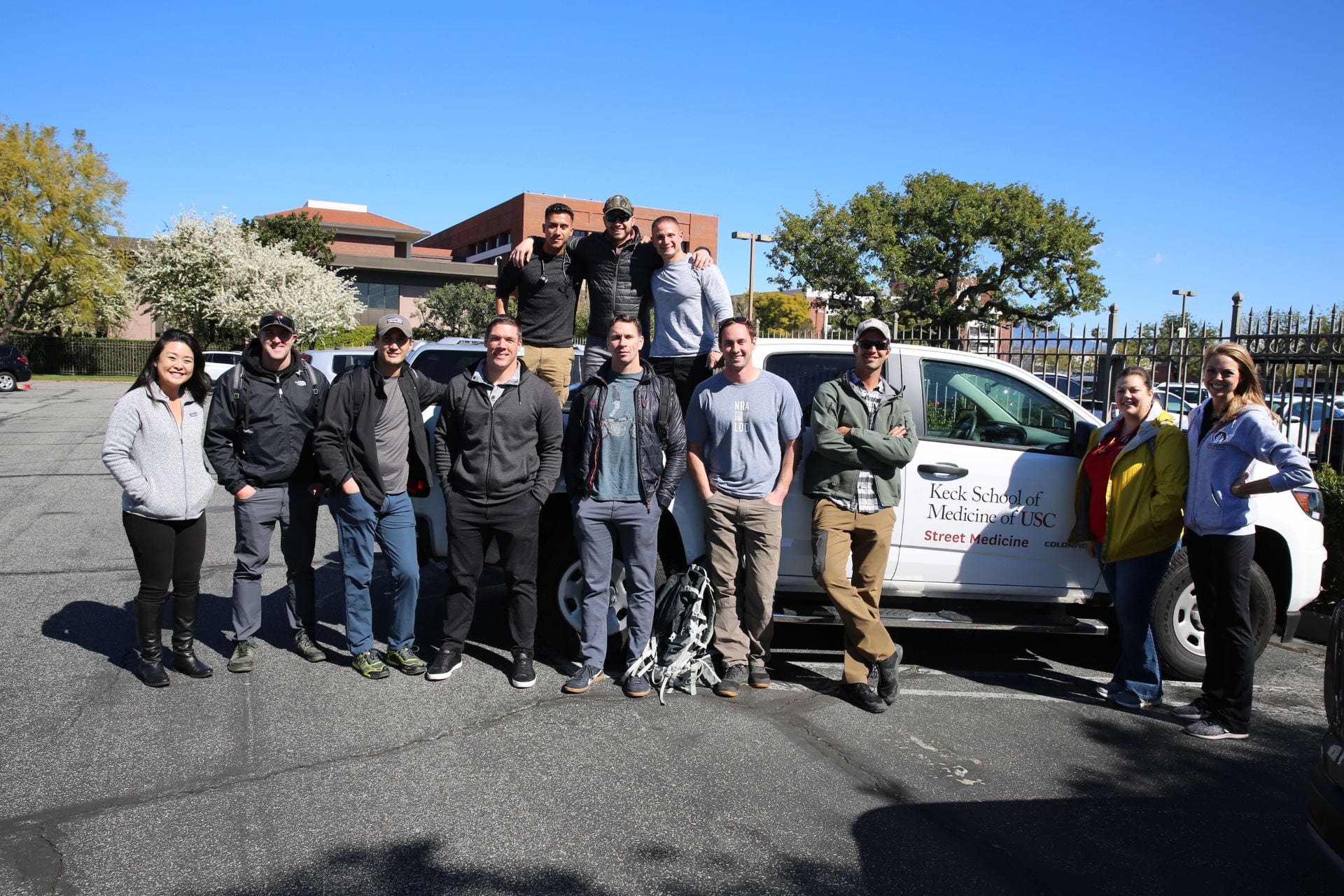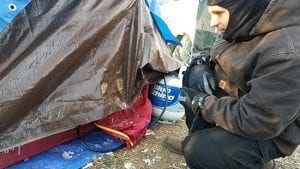The homelessness crisis in Los Angeles can be described as a burning building: the latest count put the number up 12%, at 36,300 in the city alone. That’s the largest population of unsheltered homeless in the country, by far. To treat those patients on the streets takes a special kind of medical provider — ready to tackle the singular challenges of street medicine.
“We’re actually the ones on fire,” Brett Feldman, MSPAS, PA-C, clinical assistant professor of family medicine (clinician educator) and director of street medicine at the Keck School of Medicine of USC, told a packed auditorium at the first-ever L.A. Street Medicine Symposium. In the past few years, Los Angeles has gone from two people practicing street medicine to 13, and from one organization to five — and all are ready for more.
During the daylong conference, held July 25 on the Health Sciences Campus, medical professionals from around the country learned about best practices for treating people living on the streets, from psychiatric medicine to quality assurance.
“Today is an important step in continuing to deliver health care directly to our neighbors, whether they are on the streets, under bridges or on the riverbanks, experiencing homelessness,” Laura Mosqueda, dean of the Keck School of Medicine, told the audience. She added that Keck Medicine of USC has a long history of programs designed to serve those who are on the margins of society. For example, Keck School medical students team up with students from occupational therapy, social work and pharmacy to provide health care on Skid Row. “We’re all in this together and each of us has an important contribution to make,” Mosqueda said.

The L.A. Street Medicine Symposium was presented by the Department of Family Medicine and the USC Office of Continuing Medical Education. The L.A. Street Medicine Symposium is an essential step toward developing a workforce ready to serve our neighbors living on the street, organizers said. (Photo/Ricardo Carrasco III)
People living on the streets suffer tangible medical problems: the average life expectancy is 42-52 years unsheltered, but 78 years for someone who is housed. The leading causes of death for a person living on the streets are cancer, heart disease, chronic substance abuse and drug overdose.
Street medicine is unique in the medical world because the care has to be delivered out of the clinic, directly to the unsheltered homeless, Feldman said. Providers do rounds to their patients on foot (or occasionally on horseback or kayak) while carrying a few backpacks full of medical supplies. Medical care also is an instrument of peace and a tool for advocacy. “We are going to a war-torn area with traumatized patients,” Feldman explained. He added: “More important than any of the medicine, we bring hope.”
Liz Frye, MD, MPH, director of psychiatry and street medicine at Mercy Care, an Atlanta-based homeless health care center, told the audience how best to practice psychiatric care for the unsheltered homeless. She explained that street diagnosis often meant using the same medicines — but different type of diagnosing. Instead of taking an hour to do a complete psychiatric workup, Frye often does a rapid assessment in 15-20 minutes and adjusts the diagnosis on subsequent visits. She prescribes a small amount of medication (so it won’t get lost) and checks in often with her patients.
“Practitioners should always weigh risk of exposure to the streets and the risk of treatment,” she said. “Above all else, the most important thing you do is build trust with the people who are sleeping outside. Focus on the person’s needs, check your own agenda.”
— Katharine Gammon
